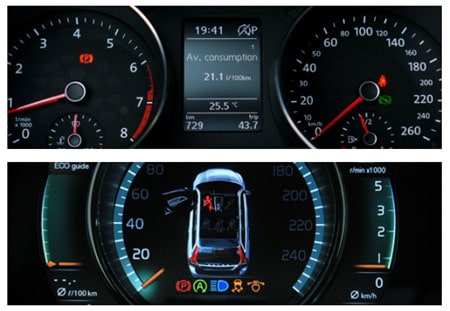What if you’ve already got products that don’t have attention-getting interfaces with mass-market prices? Thankfully, we’ve thought of that. We’ve got ways for you to consider adapting your existing designs, starting with;
Downward Migration
Moving screens from high-end products into lower-end ones may be a successful strategy for you as well. It often makes sense to introduce new features—especially screens—into high-end products first. Automotive instrument clusters are a prime example of this downward feature migration. Replacing physical gauges with digital screens started in premium level cars but has now trickled down to mid- and entry-level vehicles.
With larger margins, premium products are better able to absorb the cost of extra hardware and early adopters are usually willing to spend a little more coin to get the latest tech. However, as these features catch on with the general public, it makes sense to migrate them into mass-market products.
If you’ve already built a great UI on your top-end device, bringing it into a mass market product is a sure-fire way to differentiate it from the screen-less competition.
To succeed at this downward migration however, requires dramatically reducing costs and simplifying features. Thankfully the transition to a microcontroller provides enough cost savings to allow you to move premium features into mid-level products, even though that journey often requires simplification to meet the tighter constraints of the smaller hardware.
The process of extending your UI downwards is dramatically simplified if you plan in advance to build your UI for reuse and testability, and make UI reuse and testing part of your completion criteria.
The UI feature simplification required to reach lower-level screens has an added benefit. Besides smaller bill of materials costs, it also better segments your product family so that the newly enabled mid-market devices won’t accidentally cannibalize your upper-end products.

